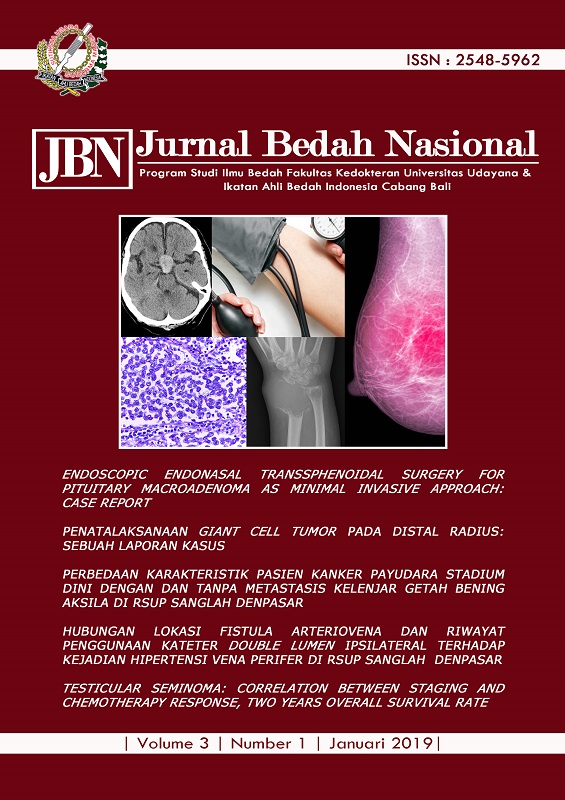Testicular Seminoma: Correlation Between Staging and Chemotherapy Response, Two Years Overall Survival Rate
Abstract
Objective: to determine the patient’s characteristics, correlation between staging and chemotherapy response, furthermore two years overall survival rate. Methods: a retrospective analytic study was conducted. Data were obtained from medical records in January 2008 to December 2014 and analyzed using SPSS 17.0. All of correlation between staging and chemotherapy response, primary tumor staging (pT) and metastasis (M), regional lymph nodes staging (N) and metastasis (M), serum tumor marker and chemotherapy response were tested by Spearman correlation test. Two years overall survival rate was analyzed by Kaplan-Meier. Data ratio with normal distribution was tested by Paired T-test. Results: the mean age of patients were 31.03 ± 13.751 years, with seven patients (15.6%) had previous history of undescended testis. Based on TNM staging, we found that most patients had already develop into stage pT3 (46.7%), N3 (57.7%), and M0 (57.7%). A significant correlation between staging and chemotherapy response was shown with stage I of testicular seminoma had completely chemotherapy response (100%) and two years overall survival rate in stage I was 100%, whereas in metastatic seminoma (stage II and III) was 60%, with Hazard Ratio 0.63 (p=0.294; 95%CI 0.276-1.476). Conclusion: patients in early stage of testicular seminoma will give a better response to chemotherapy and will have better survival rate compared to those with metastatic seminoma.
Downloads

This work is licensed under a Creative Commons Attribution 4.0 International License.
Program Studi Ilmu Bedah Fakultas Kedokteran Universitas Udayana. 
This work is licensed under a Creative Commons Attribution 4.0 International License.






